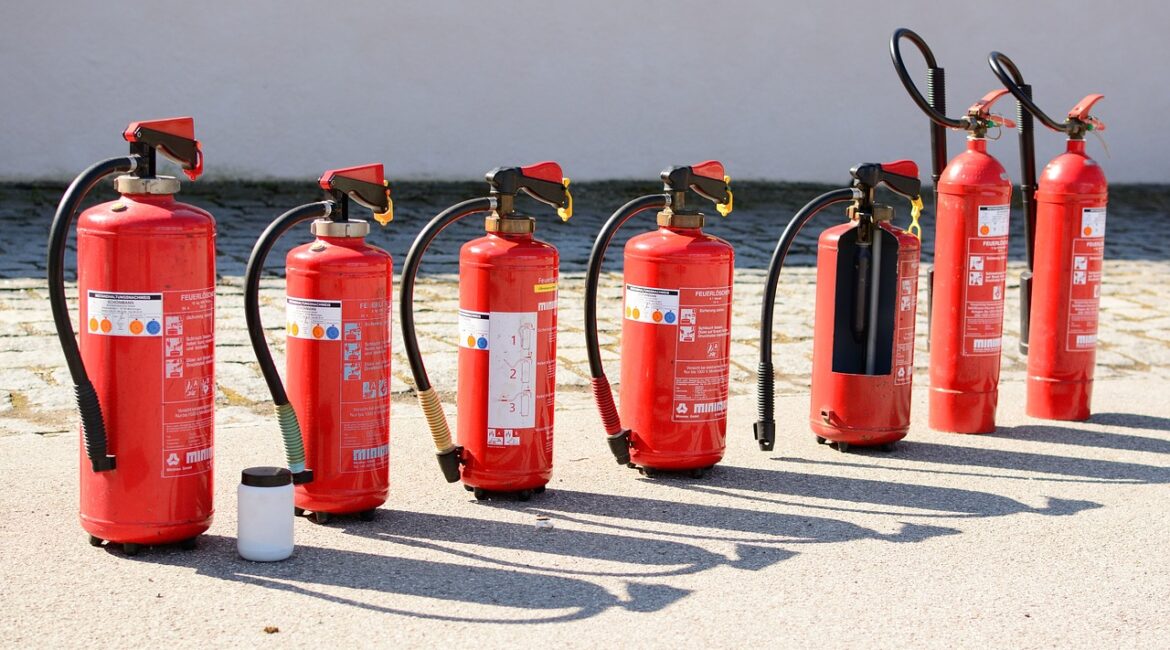Protecting your loved ones and property from fire starts with having the right equipment at hand. Fire extinguishers are essential first responders in emergencies, but choosing the right one can be tricky. In Singapore, the Singapore Civil Defence Force (SCDF) provides guidance on selecting, installing, and maintaining appropriate extinguishers for various settings.
Remember, not all fires are the same, and using the wrong extinguisher can worsen the situation. In this guide, we’ll break down the different types of fire extinguishers, highlighting their strengths and ideal uses. We’ll also provide key maintenance tips, ensuring your extinguisher is ready to act when you need it most.
1. Water Extinguishers
Water extinguishers are one of the most commonly used types. These extinguishers are ideal for Class A fires involving solid materials like wood or paper. Water extinguishes the fire by cooling the burning material until it drops below its ignition point.
However, water extinguishers are not suitable for electrical fires or fires caused by flammable liquids, as they can trigger an electrical shock that can cause more damage or injuries. These extinguishers are great for use in homes or offices but should be avoided in areas with electrical hazards.
2. Foam Extinguishers
Foam extinguishers are versatile and practical against both Class A (solid combustibles) and Class B (flammable liquids) fires, such as petrol or paint. The foam creates a seal over the liquid’s surface, cutting off the oxygen supply and preventing re-ignition.
This type of extinguisher is commonly found in places like garages, workshops, and warehouses. While foam extinguishers aren’t generally recommended for electrical fires, some newer models are safer for use around electrical equipment than traditional water extinguishers.
3. CO2 Extinguishers
CO2 extinguishers are specially designed to tackle electrical fires and flammable liquids, making them the go-to choice for offices, server rooms, and areas with a lot of electronic equipment. They release carbon dioxide, a cold gas that suffocates the fire by removing the oxygen around it.
A big advantage of CO2 extinguishers is that they don’t leave any residue, which makes them ideal for protecting sensitive electronics. However, they may not prevent the re-ignition of flammable solids or liquids, so they’re often used alongside other extinguishers like foam or dry powder for complete fire protection.
4. Dry Powder Extinguishers
Dry powder extinguishers are highly versatile as they can put out Class A, B, and C fires. This means they work on solid combustibles, flammable liquids, and even flammable gases. The powder works by creating a barrier between the fuel and the surrounding air, effectively suffocating the fire.
While dry powder extinguishers provide wide-ranging fire protection, they are not ideal for indoor use, like in offices or domestic premises because the powder can reduce visibility and be harmful if inhaled. They are better suited for outdoor areas or spaces with good ventilation.
5. Wet Chemical Extinguishers
Wet chemical extinguishers are most suitable for Class F fires, which include cooking oils and fats. They are particularly important in commercial kitchens, restaurants, and catering businesses. Fires caused by cooking oils can reach extremely high temperatures, and using the wrong type of extinguisher can make the situation worse.
This extinguisher is equipped with a special nozzle that produces a very fine mist containing potassium that will form a soapy layer. The fine mist helps to prevent the fire from expanding and eventually put it out.
Also Read – How Fire Sprinkler Systems Work
How to Choose the Right Fire Extinguisher
Choosing the right fire extinguisher depends on the environment and the types of materials or risks present. In homes and offices with low fire risks, a water or foam extinguisher might be enough. However, in places with plenty of electrical equipment, like data centres, CO2 extinguishers are the safest option.
For commercial kitchens, where grease fires are common, wet chemical extinguishers are the most effective. In industrial settings, where various fire hazards exist, multi-class extinguishers like dry powder are commonly used as they can handle different types of fires.
Understanding which extinguisher to use in each situation is key to ensuring safety and being well-prepared for emergencies. By choosing the right one, you’ll be ready to tackle any fire hazard that comes your way.
Maintenance and Legal Requirements in Singapore
Maintaining fire extinguishers is essential to make sure they work properly in an emergency situation. The SCDF requires that fire extinguishers be inspected at least once a month by a certified fire safety professional. Businesses must also keep records of these inspections to confirm that all safety equipment is in good working condition.
Beyond professional inspections, a simple visual check is also vital. Ensure your extinguisher is easily accessible, instructions are visible, and the pressure gauge is within the correct range. Check for signs of damage, rust, or leaks. If an extinguisher has been used, even partially, it must be recharged or replaced immediately. Keep in mind that a well-maintained fire extinguisher is your first line of defence against a fire.
Get The Best Type Of Fire Extinguisher For Your Home
By choosing the appropriate extinguisher for the specific fire risks present, ensuring it is properly maintained, and following the fire safety regulations, you can confidently protect your property and lives from potential fire hazards.
We understand that choosing the right fire extinguisher can be overwhelming. That’s why we at King Fire are here to help. We provide expert advice on choosing the right fire protection system and offer fire protection services in Singapore, including comprehensive maintenance services to ensure your extinguishers are always in top condition.
Contact us today to learn more about how we can help you safeguard your home or business
